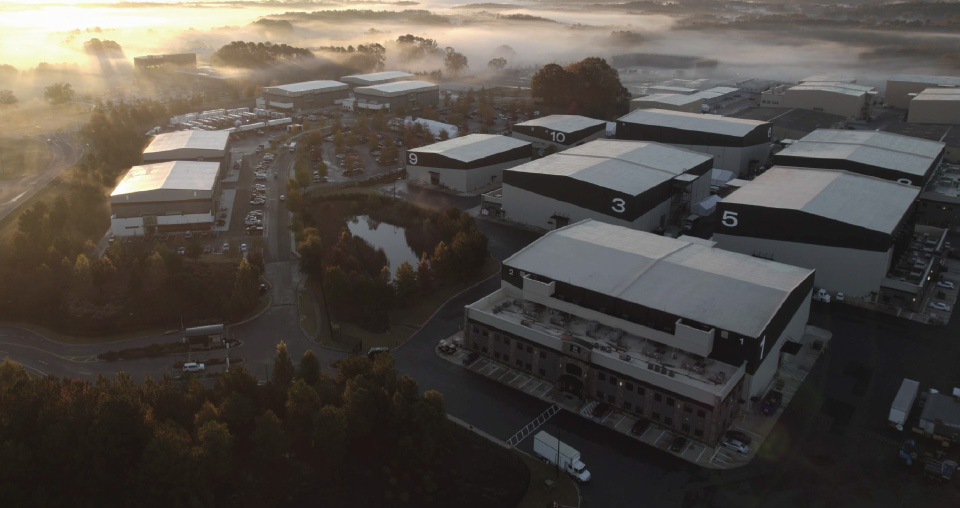Extending Realities In Georgia’s XR landscapes
Lightsabers and shots of crimson laser beams cut through a landscape of deciduous trees within an eerie fog. Ahsoka Tano (played by Rosario Dawson) establishes herself as a Jedi warrior, slicing through enemies with brute strength and a creative edge to each killing. Nightfall is upon this forest of death, and the bare trees that still stand after all the fighting take on an endless quality. Where does the forest end and where does it begin?
In an instant, the sky brightens and the seemingly endless forest is suddenly behind the camera. The colossal doors to a guarded village open slowly, revealing a new set in the grayish blue light of dawn. The transition in the environment is smooth and takes on an effortless quality. “The Mandalorian” season one and two both take on magical qualities of seamless transitions from one otherworldly set to the next. When the audience isn’t immersed in the uncanny forest with Tano, they’re in the air with Cara Dune (played by Gina Carano) flying a ship through the crevices of towering mountains in the bright light of day, walking through the desert before sunset alongside The Mandalorian (played by Pedro Pascal) and Grogu (David Acord), and more.
Evolutionary cinema is happening across the globe as television series and films adapt to virtual production on a grander scale, creating true-to-life sets that exceed viewers’ expectations. The Disney+ Star Wars spin off, “The Mandalorian,” was shot on an LA soundstage encased by LED walls that displayed ever changing digital sets. Instead of being challenged with the static green screen, “The Mandalorian’s” cast was able to engage with a 20 foot high and 270 degree semi-circular LED video wall with ceiling and a 75 foot in diameter performance space, called the Volume.
Now, virtual sets can be built before going into principal photography. The results are groundbreaking. The location backdrops are drafted by VFX artists as 3D models. Then, photographic scans are mapped onto the stage. Practical set pieces are combined to create a lush mise en scene.
Extended reality, known as XR, is a term that refers to a combining of the real and virtual worlds. In XR, human and machine interaction is generated by computer technology and wearables. The X in XR signifies the variable for any current or future spatial computing technologies. Spatial computing was defined in 2003 by Simon Greenwold, as “human interaction with a machine in which the machine retains and manipulates referents to real objects and spaces.” This includes augmented reality (AR), mixed reality (MR), and virtual reality (VR).
According to Business Wire, the virtual production market was valued at 1,463.46 million USD in 2020 and is projected to reach 4,744.04 million USD by 2028. Virtual production is an umbrella term to describe the emerging technology which uses software tools to combine computer graphics and live action footage in real-time. This cutting edge technology cuts costs on location scouting, art department, and more. With this enhanced technology, executing creative ideas becomes a more intuitive rather than arduous process.
While the virtual production masterminds behind “The Mandalorian” are the pioneers in XR stages, companies all around Georgia are offering competing technologies that are worth delving into.In an interview with Nick Rivero of MEPTIK Studios, a Georgia-based company that specializes in immersive environments for virtual and extended reality (XR) production and experiential design, real time content, and projection, he broke down the three Rs of virtual production for Oz readers: “VR: Virtual Reality you put on a headset, changes your perception, AR: Taking the digital and putting it into the physical i.e. Instagram, PokemonGo, XR: Using the digital world to create entirely new and immersive environments.”

